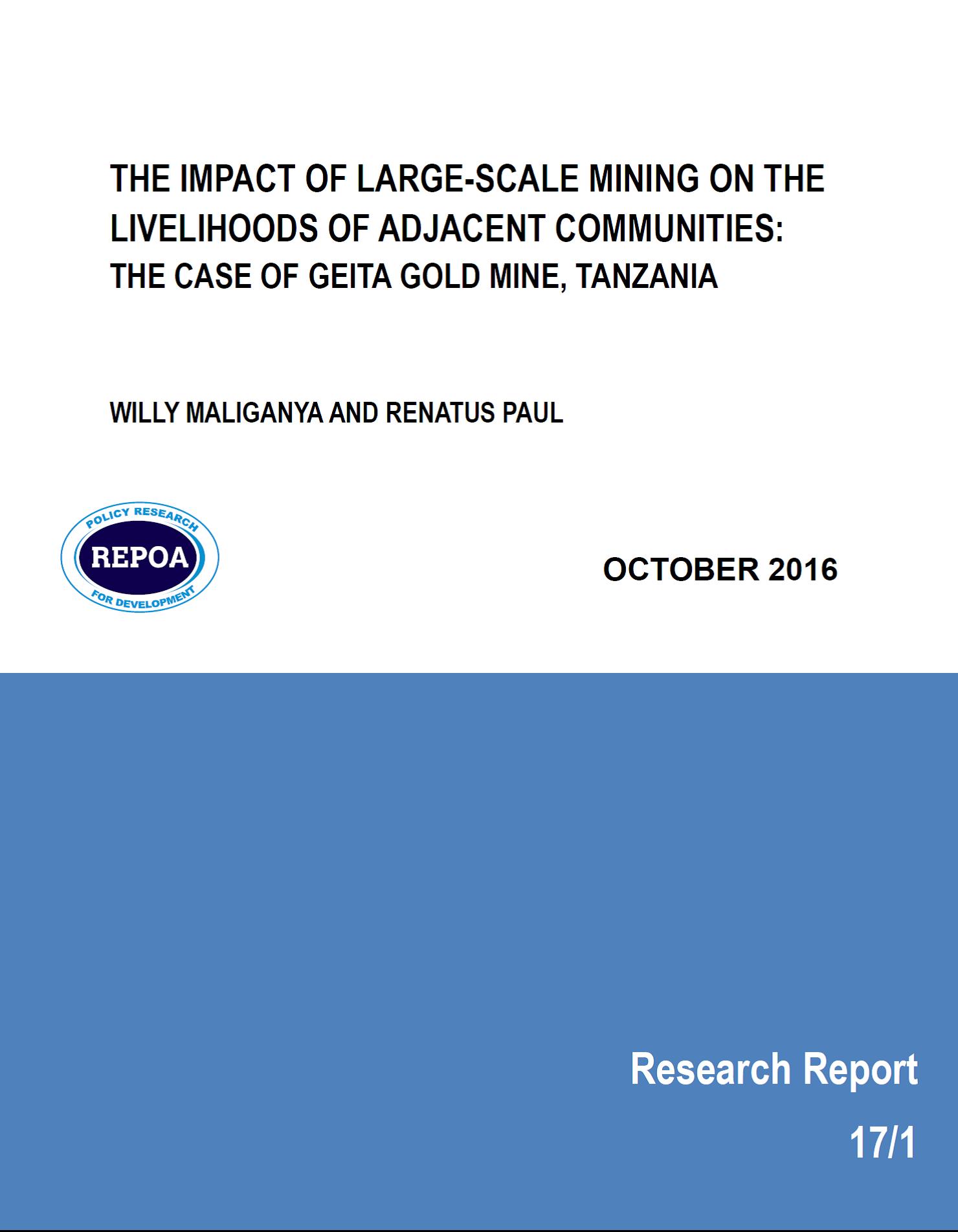Resource information
This study assessed the contribution of Geita Gold Mine (GGM) to the livelihoods of local communities in Geita District. Specifically, it assessed the effectiveness of corporate social responsibility implementation, determined the extent to which GGM has contributed to socio-economic development in the study area, and examined the communities’ perceptions of environmental problems associated with mining activities and their impact on community well-being. A cross-sectional research design was employed, in which qualitative and quantitative methods of data collection were used. The sample size comprised 128 households, and data were collected using checklists, questionnaires, FGDs, personal observations, and documentary reviews. Descriptive and inferential statistical analyses were used to obtain the findings. The findings revealed notable contributions to employment, education, health, and markets from GGM, including the construction of Nyankumbu girls’ secondary school and the supply of desks to seven schools. GGM also established Moyo wa Huruma Orphanage Centre, constructed Nyakabale clinic, and supported cleft palate surgery, along with the construction of two outpatient buildings. In contrast, the majority reported a ‘strong negative influence of GGM activities on water pollution, air pollution, noise, and land degradation in nearby villages, unlike in villages further away from GGM where there was no impact. It was recommended that a bottom-up approach could be of great importance as it would inform the communities and mitigate negative community perceptions of GGM. It would also be useful as it might allow effective functioning of corporate social responsibility by the company in relation to the communities. Similarly, accounting for negative externalities in operation costs would reduce or completely eliminate environmental problems associated with GGM’s mining activities, and minimize the existing community dissatisfaction with regard to the environment. In this regard, both GGM and the responsible authorities should put in place the arrangements necessary to support the long-term economic sustainability of communities adjacent to GMM, even when the mines are closed


